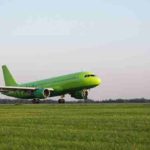Impossible Aerospace says it wants to re-imagine electric-powered flight, starting with its new US-1 drone.
Following a $9.4 million Series A funding round, Impossible Aerospace has unveiled the US-1, an electric commercial-grade drone with a flight time of up to two hours. Many drones of the same class can only fly for 25 minutes before they need to be recharged.
Impossible Aerospace says the US-1 is the first aircraft designed with a “battery-first approach,” which the company says is necessary to enable electric aircraft to compete with conventionally fuelled flight.
A flying battery
The US-1 is equipped with optical and thermal sensors and sales have already begun to firefighters, police departments, and search and rescue teams across the US.
Spencer Gore, CEO of Impossible Aerospace, said: “The US-1 is more than just a drone.
“It’s the first aircraft designed properly from the ground up to be electric, using existing battery cells without compromise.”
He added: “It’s not so much an aircraft as it is a flying battery, leveraging an energy source that doubles as its primary structure. This is how electric aircraft must be built if they are to compete with conventional designs and displace petroleum fuels in aviation.”
US-1 drones will be engineered and assembled entirely in the US in order to address privacy and security concerns, Impossible Aerospace says.
An electric future
Impossible Aerospace is “on a mission to assemble the highest performance aircraft possible with electric propulsion.” The company was founded in 2016 and is headquartered in Sunnyvale, California.
Investor, Greg Reichow, of Eclipse Ventures, said: “From both a cost and environmental standpoint, the future of aviation is electric. We invested in Impossible Aerospace because of their thoughtful and systematic approach to re-thinking the fundamentals of electric aircraft. Our first product, the US-1, outperforms existing solutions in a market crying out for reliable, domestically-manufactured long-duration aircraft, while validating the technology required to build aircraft of the future.”

